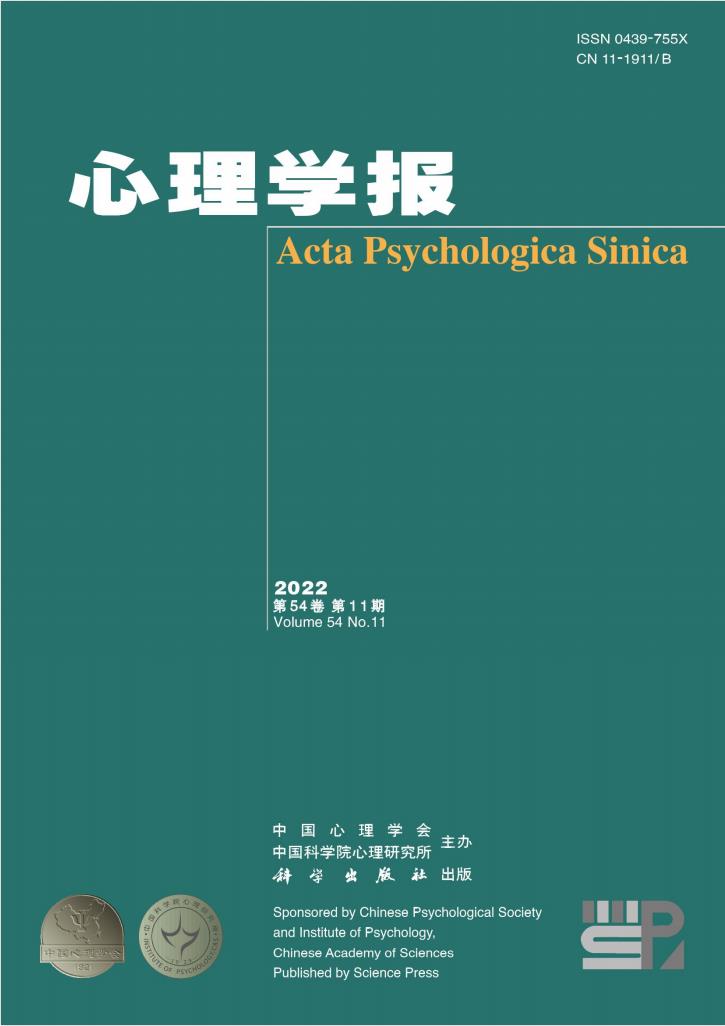Does conformity lead to gains? The effect of workplace ostracism on performance evaluation from a self-presentational view
IF 1.3
4区 心理学
Q3 PSYCHOLOGY, MULTIDISCIPLINARY
引用次数: 5
Abstract
Workplace ostracism is an increasingly widespread and serious social problem nowadays. Many studies have shown that being rejected in the workplace can significantly increase employees’ psychological stress, lead to health problems, and even cause deviant workplace behaviors, thereby ultimately damaging the normal operation of an organization and lowering organizational performance. However, existing research regarding the impact of workplace exclusion on individual performance has reached inconsistent conclusions; thus, this field involves hidden mechanisms that need to be further explored. To address this theoretical gap, we drew upon the self-presentational perspective and hypothesized that employees’ collectivism values strengthen the likelihood that employees will create facades of conformity when suffering from workplace ostracism. We further assumed that whether or not a supervisor is a collectivist determines how the employees’ creation of facades of conformity affect subsequent performance ratings. We tested these hypotheses in an experimental study and a field sample of supervisor-employee dyads. For the experimental study, we recruited 142 full-time Chinese workers in different industries as participants through the authors’ alumni networks. The respondents were randomly assigned to one of two experimental conditions: the ostracism condition ( N = 70) versus the inclusion condition ( N = 72). Participants first completed a measure of collectivism values and reported their demographics. Then, they were asked to read a scenario from a computer screen, one which depicted a situation in which the participant was ostracized (or included) by team members in a hypothetical organization. After reading the scenario, participants finished the manipulation check of workplace ostracism and indicated the extent to which they would be likely to engage in creating facades of conformity. For the field study, we collected 254 dyadic data from a major air company in China at three time-spots. At Time 1, employees assessed perceived workplace ostracism and their collectivism values, as well as provided their demographic information. At Time 2 (one months after Time 1), employees rated their self-esteem level and the extent to which they create facades of conformity, conduct self-leadership, and implement impression management strategies. At Time 3 (one months after Time 2), supervisors provided a performance evaluation of the focal employee and their own collectivism values. We applied confirmatory factor analysis, regression analysis, and bootstrap methods via SPSS 22.0 and Mplus7.4 software to analyze the data. Empirical results supported our arguments that workplace ostracism was positively related to facades of conformity. The relationship between workplace ostracism and facades of conformity was stronger when employees had high levels of collectivism values. When supervisors themselves also hold high levels of collectivism values, the employees’ facades of conformity are positively related to the supervisors’ evaluations of job performance. Moreover, workplace ostracism has a conditional, positive indirect effect on supervisor evaluations of employee performance via employee facades of conformity, such that the indirect effect is positive only when both the employees’ and supervisors’ collectivism values are high. With these findings, we make several contributions to the literature and management practice. First, we offered a new explanatory mechanism for understanding the complex relationship between workplace ostracism and employee performance from a self-presentational perspective by examining the mediating role of creating facades of conformity. Second, our findings on the moderating effect of employees’ collectivism values provide explanations for the differential reaction to negative workplace experiences such as workplace ostracism. Third, by exploring the contingent role of leaders’ collectivism values, our study is among the earliest attempts to consider the role of bystanders in the ostracism process. Finally, we enrich the research field of conformity by examining new criteria, thereby providing a response to the call for investigating the antecedents and consequences of facades of conformity.从众会带来收益吗?自我表征视角下的职场排斥对绩效评估的影响
职场排斥是一个日益普遍和严重的社会问题。许多研究表明,在工作场所被拒绝会显著增加员工的心理压力,导致健康问题,甚至导致越轨的工作行为,从而最终损害组织的正常运作,降低组织绩效。然而,关于工作场所排斥对个人表现的影响的现有研究得出了不一致的结论;因此,这一领域涉及到需要进一步探索的隐藏机制。为了解决这一理论空白,我们借鉴了自我表象的观点,并假设员工的集体主义价值观增强了员工在遭受职场排斥时创造顺从外表的可能性。我们进一步假设,主管是否是集体主义者,决定了员工对一致性外表的创造如何影响后续的绩效评级。我们在一项实验研究和一个主管-员工二人组的现场样本中检验了这些假设。在实验研究中,我们通过作者的校友网络招募了142名来自不同行业的全职中国工人作为参与者。受访者被随机分配到两种实验条件中的一种:排斥条件(N=70)和包容条件(N=72)。参与者首先完成了集体主义价值观的测量,并报告了他们的人口统计数据。然后,他们被要求从电脑屏幕上阅读一个场景,其中描述了参与者被假设组织中的团队成员排斥(或包括在内)的情况。在阅读该场景后,参与者完成了对工作场所排斥的操纵检查,并指出了他们可能在多大程度上参与创造顺从的外表。在实地研究中,我们从中国一家主要航空公司收集了三个时间点的254个二元数据。在时间1,员工评估了工作场所的排斥感和集体主义价值观,并提供了他们的人口统计信息。在时间2(时间1后一个月),员工评估了他们的自尊水平,以及他们在多大程度上创造了顺从的外表,进行了自我领导,并实施了印象管理策略。在时间3(时间2后一个月),主管对重点员工及其集体主义价值观进行了绩效评估。我们采用验证性因素分析、回归分析和bootstrap方法,通过SPSS 22.0和Mplus7.4软件对数据进行分析。实证结果支持了我们的论点,即工作场所的排斥与从众外表呈正相关。当员工具有高度的集体主义价值观时,工作场所的排斥与顺从外表之间的关系更为密切。当主管本身也持有高度的集体主义价值观时,员工的一致性外表与主管对工作表现的评价呈正相关。此外,工作场所的排斥通过员工的一致性外表对主管对员工绩效的评估具有条件的、积极的间接影响,因此只有当员工和主管的集体主义价值观都很高时,这种间接影响才是积极的。通过这些发现,我们对文献和管理实践做出了一些贡献。首先,我们提供了一种新的解释机制,通过考察创造一致性外表的中介作用,从自我表象的角度理解工作场所排斥与员工绩效之间的复杂关系。其次,我们对员工集体主义价值观的调节作用的研究结果为对负面工作体验(如工作排斥)的不同反应提供了解释。第三,通过探索领导者集体主义价值观的偶然作用,我们的研究是最早考虑旁观者在排斥过程中的作用的尝试之一。最后,我们通过研究新的标准丰富了一致性的研究领域,从而回应了调查一致性外表的前因和后果的呼吁。
本文章由计算机程序翻译,如有差异,请以英文原文为准。
求助全文
约1分钟内获得全文
求助全文
来源期刊

心理学报
Psychology-Psychology (all)
CiteScore
1.70
自引率
13.30%
发文量
1612
期刊介绍:
Acta Psychologica Sinica (ISSN 0439-755X) is a scholarly journal sponsored by the Chinese Psychological Society and the Institute of Psychology, Chinese Academy of Sciences, and published monthly by the Science Press.
Acta Psychologica Sinica has been included in many important national and international indexing systems such as SCOPUS (Elsevier), ESCI (Web of Science), PsycINFO (APA), CSCD. It is the flagship journal of the Chinese Psychological Society that publishes peer-reviewed original empirical studies and theoretical articles spanning the entire spectrum of scientific psychology.
Acta Psychologica Sinica publishes high-quality research that investigates the fundamental mechanisms of mind and behavior and aims to deliver scientific knowledge to enhance our understanding of culture and society. It welcomes submissions of manuscripts reporting research that is up-to-date, scientifically excellent, and of broad interest and significance.
 求助内容:
求助内容: 应助结果提醒方式:
应助结果提醒方式:


